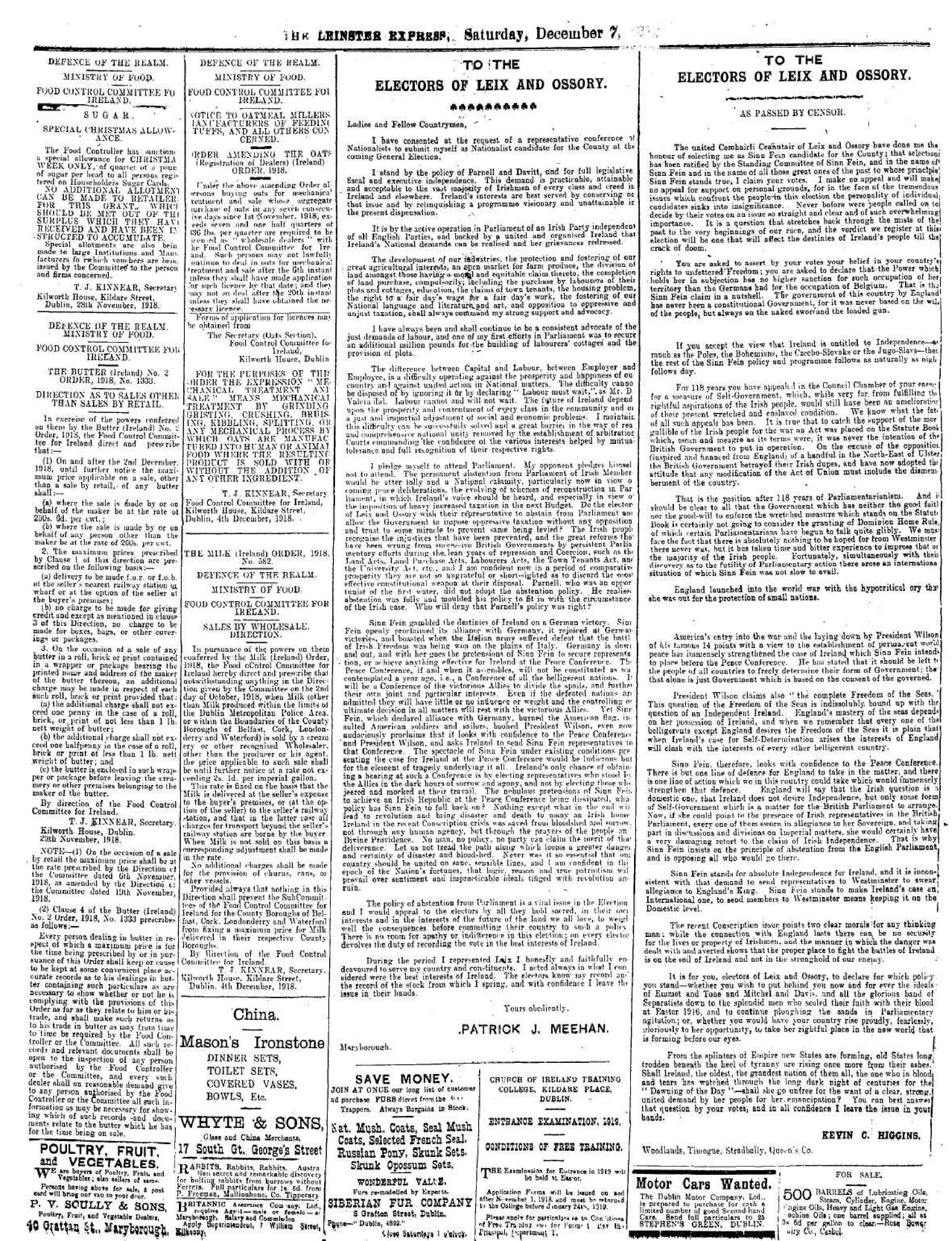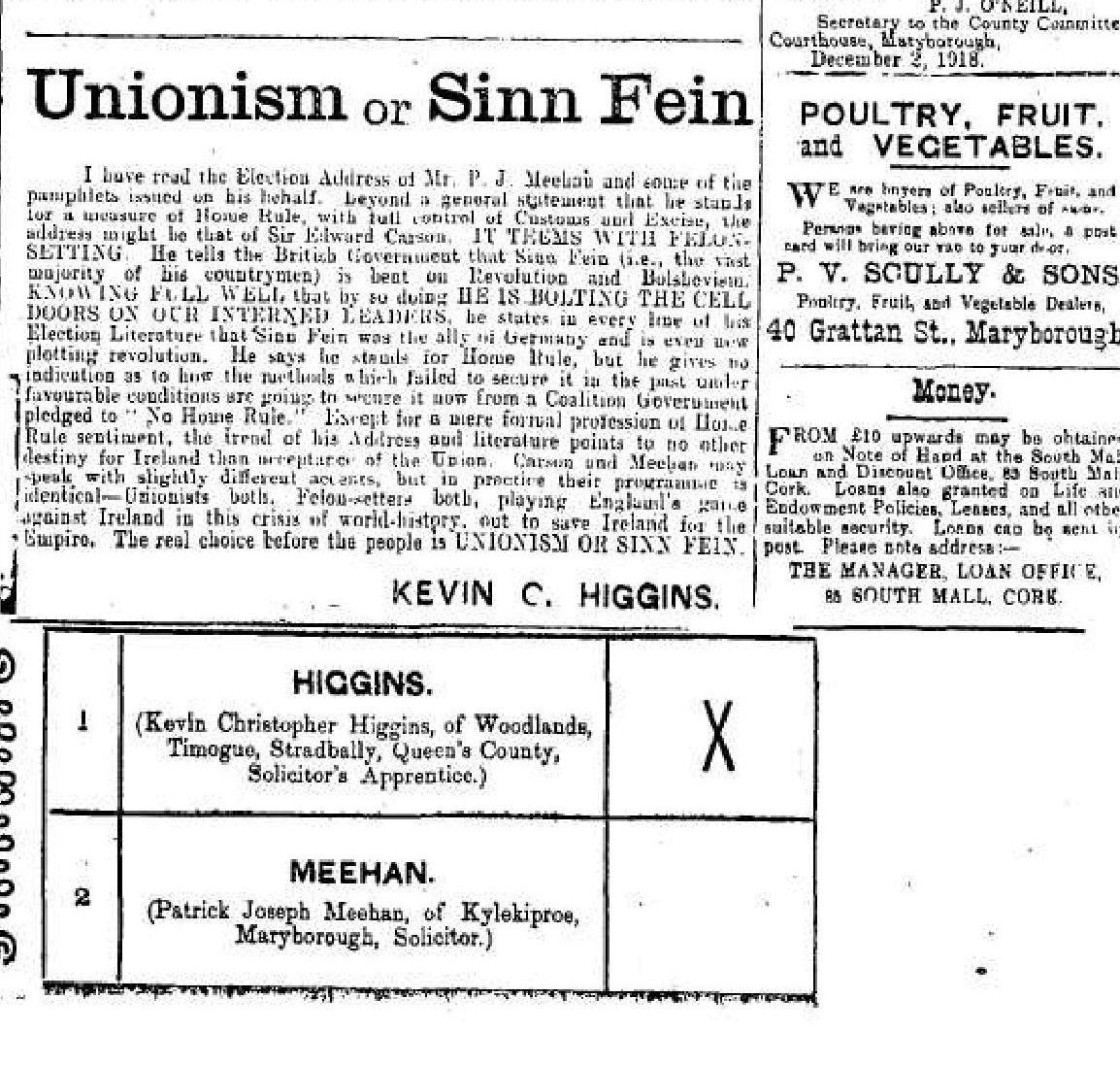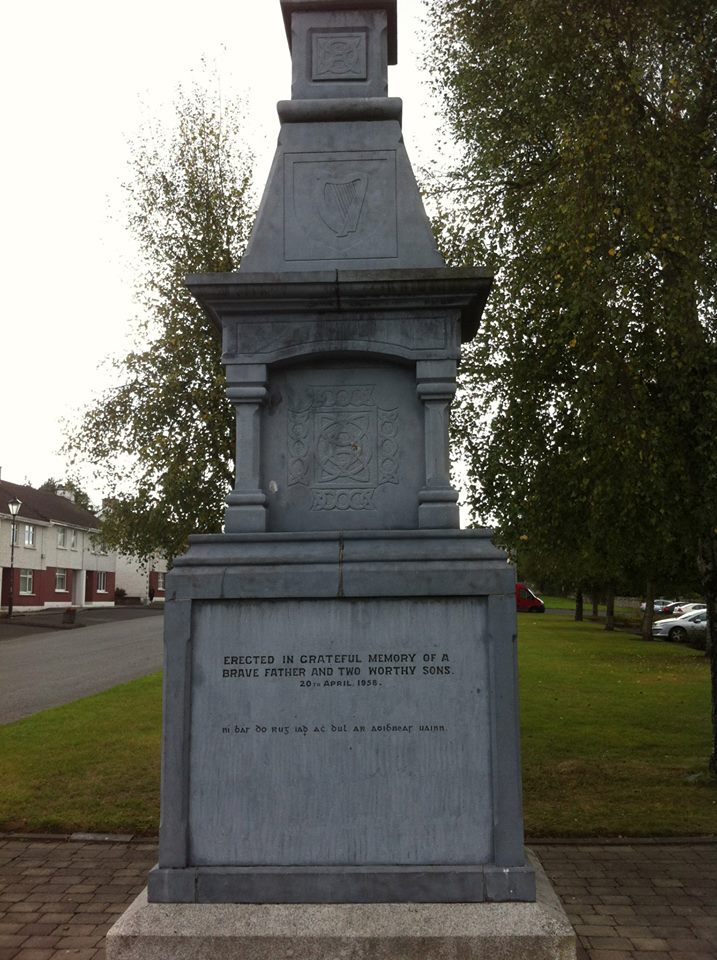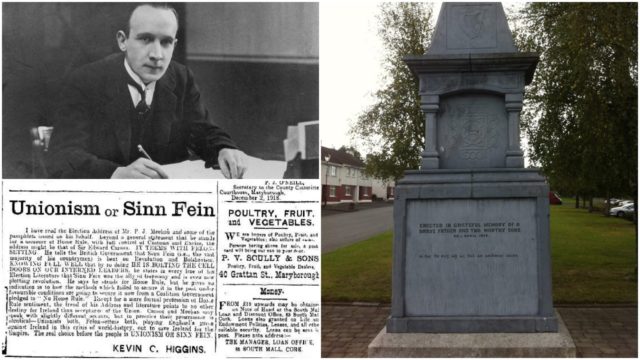This piece originally appeared on LaoisToday on December 14, the centenary of the historic 1918 election.
It was the final election to include the whole island of Ireland and it was one that changed the landscape of the country forever.
It was also the first election to be held after the Representation of the People Act 1918.
This meant that for the first time women over the age of 30, and all men over the age of 21, could vote. Previously, all women and most working-class men had been excluded from voting.
It was the election that saw the shift from the Irish Parliamentary Party of Isaac Butt, Charles Stuart Parnell and John Redmond to Eamon de Valera’s Sinn Fein.
The Irish Parliamentary Party, which had dominated nationalist politics since it was set up by Parnell in the early 1880s, had won 73 of the 105 Irish seats at Westminster in 1910.
However, it was left with just six in 1918, four of which, in the North, were retained as a result of a pact with Sinn Féin brokered by the Catholic primate Cardinal Logue.
Sinn Féin won 73 seats in 1918, with Unionists taking 26, mostly in the northeast – although one candidate triumphed in Dublin.
Sinn Féin benefited hugely from the Westminster first-past-the-post electoral system – it won nearly three quarters of the Irish seats with just 48 per cent of the vote – 65 per cent in what would become the 26 counties. In a number of constituencies, however, including most of Cork and de Valera’s East Clare were uncontested with Sinn Fein automatically taking the seat without a battle.
In Laois, where the constituency was then known as Queen’s County, Kevin O’Higgins trounced the sitting MP Patrick Meehan who was a member of the Irish Parliamentary Party. It was a one-seat constituency.
O’Higgins, who would go on to make a huge impact in Irish politics, was born in Stradbally in 1892 and was one of 16 children of Dr Thomas Higgins and Anne Sullivan, daughter of the Nationalist politician Timothy Daniel Sullivan.
He attended four schools, including Clongowes Wood, Portlaoise CBS and Knockbeg College, before entering St Patrick’s College, Maynooth.
On deciding that the priesthood was not for him, he took degrees in arts and law. While still a student in UCD, he joined the Irish Volunteers and was imprisoned in 1918 on grounds of complicity in the “German plot”.
He was actually in prison when he was elected MP of Laois – along with a number of the other Sinn Fein candidates including de Valera – and the Leinster Express report from the time captures the mood as he won almost 68% of the vote.
In the paper on December 7, the two candidates wrote letters to the electorate outlining their manifestos if elected.
In the edition that came out on the day of the Election 100 years ago, Kevin O’Higgins said that the people had a choice to make between Sinn Fein and Unionism.
While in an editorial in the paper, they described the betting as ’50/50′ for who would win.
Kevin O’Higgins’ given address was Woodlands, Timogue, Stradbally and his occupation was a solicitor’s apprentice. Patrick Meehan was a solictor and his address was Kylekiproe, Maryborough (now Portlaoise).

Readers had to wait a week for the analysis and result of the election in the paper and it was reduced to a small paragraph on page five on Saturday, December 21.
The Leinster Express reported that out of 40,000 registered voters, 18-20,000 went to the polls with O’Higgins out-polling Meehan by two to one, according to the Sinn Fein party.
“The Sinn Feiner had made an exhaustive canvas of the entire constituency before the polling day,” wrote the Leinster Express reporter of the time, “and had been all along confident of at least a two to one majority. Mr Meehan’s party were considerably ill-equipped, as they had not the same organisation to boast of as the Sinn Feiners. The Sinn Feiners seemed to have the majority of vehicles which conveyed voters to the booths.
“In some of the polling centres the polling for Mr Higgins was undoubetdly heavy, particularly in Mountrath, Durrow, Clonaslee, Errill, Cullohill, Stradbally, Rosenallis, Rushall, Ballinakill, Timahoe and Graiguecullen.
“Mr Meehan claimed to have done well in Abbeyleix, Ballacolla, Ballybrittas, Ballyroan, Borris-in-Ossory, Camross and Rathdowney.”
The paper also reported that 20 of the 59 booths were transported to Maryborough (Portlaoise) by lorry with the remainder brought by car by the presiding officers.
In the aftermath of the elections, Sinn Féin’s elected members refused to attend the British Parliament in Westminster, and instead formed a parliament in Dublin.
The First Dáil declared Irish independence as a republic. The Irish War of Independence was conducted under this revolutionary government which sought international recognition, and set about the process of state-building.
As for Kevin O’Higgins, he would serve as an MP from 1918 until the official setting up of the Dail in 1921 where he served as Laois TD until August 1923. In the split following the infamous Treaty negotiations in London, he came down on the pro side with Michael Collins.
He moved to Dublin and held a seat as a Dublin TD from 1923 until 1927 for Cumann na nGaedheal. Throughout that time, he served as Minister for External Affairs, Minister for Economic Affairs and Minister for Justice. As Minister for Justice, he established An Garda Siochana.
He was assassinated on July 10 1927 when three gunmen ambushed him as he left his home in Cross Avenue, Booterstown, in Dublin to walk to mass. His murder was carried out by three anti-Treaty members of the IRA in revenge for Higgins’ part in the execution of 77 IRA prisoners during the Civil War, one of whom – Rory O’Connor – was Higgins’ best man when he married.
None of his killers were ever charged but the government, led by WT Cosgrave, immediately enacted legislation to force Fianna Fáil to either take its seats in the Dáil or be excluded from the electoral process. The move forced Fianna Fáil to end its policy of abstention from the Dáil.
The funeral took place after a requiem Mass at St Andrew’s Church, Westland Row, three days after his murder. The funeral cortège stretched for over three miles along thronged and silent Dublin streets, with 10 lorryloads of flowers behind the family wreaths.
He was buried in Glasnevin cemetery, in the same grave as his infant son, Finbarr Gerald.
There is a monument to Kevin O’Higgins in Court Square in Stradbally.

SEE ALSO – Check out more stories from the LaoisToday archives here
















